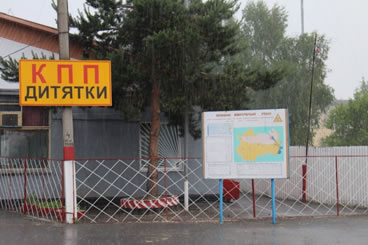
Emergency crews responding to the accident used helicopters to pour sand and boron on the reactor debris. The sand was to stop the fire and additional releases of radioactive material; the boron was to prevent additional nuclear reactions. A few weeks after the accident, the crews completely covered the damaged unit in a temporary concrete structure, called the “sarcophagus,” to limit further release of radioactive material.
The Soviet government also cut down and buried about a square mile of pine forest near the plant to reduce radioactive contamination at and near the site. Chernobyl’s three other reactors were subsequently restarted but all eventually shut down for good, with the last reactor closing in December 2000.
The Soviet nuclear power authorities presented their initial accident report to an International Atomic Energy Agency meeting in Vienna, Austria, in August 1986.
After the accident, officials closed off the area within 30 kilometers (18 miles) of the plant, except for persons with official business at the plant and those people evaluating and dealing with the consequences of the accident and operating the undamaged reactors. The Soviet (and later on, Russian) government evacuated about 115,000 people from the most heavily contaminated areas in 1986, and another 220,000 people in subsequent years
Published: Mar 14, 2023
Latest Revision: Mar 14, 2023
Ourboox Unique Identifier: OB-1429136
Copyright © 2023









